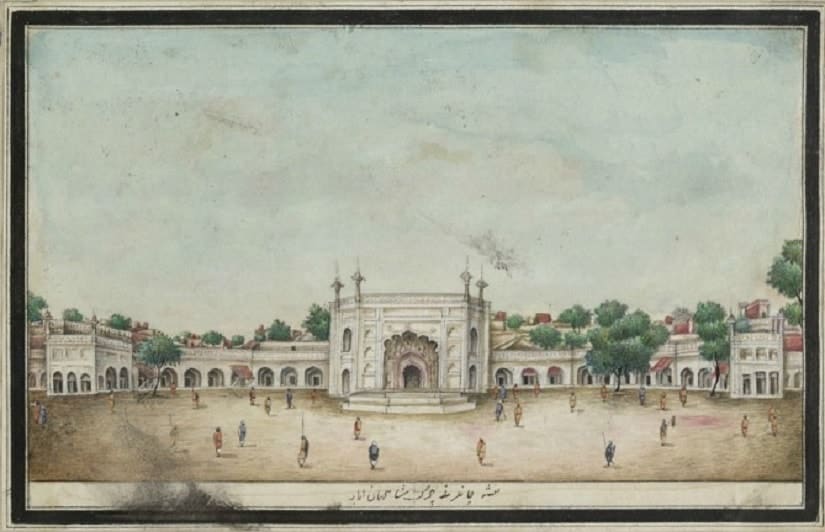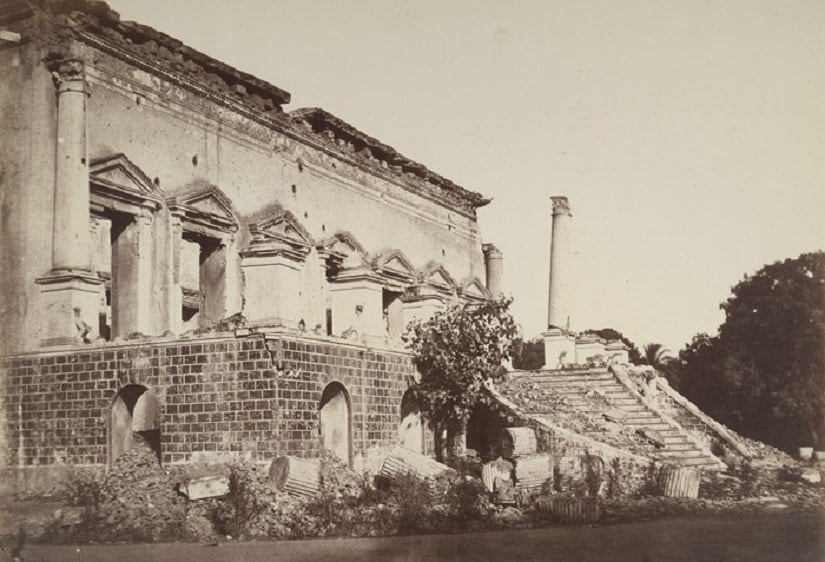By Manan Kapoor When talking about Indian monuments of the Mughal era, we often take the names of Shah Jahan, Akbar and Jehangir, who extensively built forts, mosques and gardens across northern India and present-day Pakistan. However, among those who have not got their due credit are the women of the Mughal court. And Delhi is the city where the contribution of these women has been the greatest. Much like Humayun’s first wife Bega Begum/Haji Begum — who commissioned the famous and stunning tomb for her husband — Zinat-ul Nissa, Fatehpuri Begum and Begum Samru are some of the other Mughal women who conceived of monuments such as the Fatehpuri Masjid, Zinat-ul Masjid and what is today known as Begum Samru’s haveli.
Even Chandni Chowk, an area that continues to be regarded as the heart of Dilli (as Delhi is fondly called), owes its existence to Shah Jahan and Mumtaz Mahal’s eldest daughter, Jahanara Begum.
Jahanara, the patron After the death of her mother in 1631, Jahanara was made the Pādšāh Begum (First Lady), the most powerful woman in the city. Described by the Venetian traveller Niccolò Manucci as ‘discreet, generous, open-minded and charitable’ and ‘adored by all’, the princess worked to strengthen the influence of Shahjahanabad by establishing trade relationships with Dutch merchants. She bought ships docked at Surat and invested in numerous karkhaanas (factories). ‘Her wealth enabled her to patronise works of learning, particularly Sufi works, such as commentaries on Maulana Rumi’s Masnavi_,’ wrote_ historian Swapna Liddle, author of Chandni Chowk: The Mughal City of Old Delhi (2017). Among her contributions to Delhi’s landscape, Jahanara commissioned caravanserais, a charbagh (rectangular gardens divided into quadrilaterals) called Begum ka Bagh_,_ and a canal in an area of Shahjahanabad, which would eventually become the famous Chandni Chowk. [caption id=“attachment_7012821” align=“alignnone” width=“825”]  Jahanara Begum’s caravanserai that formed the original Chandni Chowk, from Sir Thomas Theophilus Metcalf’s 1843 album. All images via Wikimedia Commons[/caption] The moonlight square In Shahjahanabad: The Sovereign City in Mughal India 1639–1739, Stephen Blake recounts that Jahanara once said: ‘I will build a sarai, large and fine like no other in Hindustan. The wanderer who enters its courts will be restored in body and soul and my name will never be forgotten.’ The sarai (rest house) was a part of Chandni Chowk, where the Town Hall now stands, amid one of Delhi’s busiest bazaars. Built in 1650, the bazaar, which initially had no formal name, was conceived by Jahanara. It stretched from Shahjahanabad’s Lahori Gate to the Fatehpuri Masjid (built by Shah Jahan’s wife Fatehpuri Begum in the same year). The 120-ft-wide bazaar stretched for more than a kilometre and was a spectacle to behold. It had 1,560 shops that traded a variety of items ranging from kebabs, rubies and emeralds to flowers, glass huqqas and eyeglasses from China; as well as the houses of the merchants. On the Urdu bazaar stretch, lived the soldiers, artisans, clerks and artists of the Mughal court, while the Ashrafi or Jauhari bazaar was the financial hub. In the coffeehouses, amirs (senior officials) gathered for mushairas and daily news gathering. Even though the bazaar was only a place for trade, Jahanara made sure it was aesthetically planned. [caption id=“attachment_7012831” align=“alignnone” width=“825”]  Chandni Chowk in the 1860s.[/caption] A charming canal flowed through the market, and watering trees flanked either side of the road, providing shade to passers-by. At the centre, the canal broadened to form an octagonal pool. To the north of this pool she built a caravanserai and to the south, a hammam. On some nights, the moonlight reflected in the central pool, earning it the name ‘Chandni Chowk’ (Moonlight Square). The mid-18th-century writer Chaturman Rai, in his account Chahar Gulshan wrote: ‘The canal brought greenness to Delhi. It ran in all of the city from lane to lane and the wells became full from it. Having flowed to the mansions of the princes and amirs it flowed into the city – to Chandni Chowk, to the chawk of Sa’adullah Khan, to Paharganj, to Ajmiri Gate, to the grazing places, to the other mahallahs and to all the lanes and bazaars of the city.’ Seventeenth-century French traveller-physician François Bernier considered the caravanserai next to Bagh Sahibabad in Chandni Chowk, ‘the most imposing structure in the city after the Jama Masjid’. Describing the imposing caravanserai, Blake wrote that it was an ‘outstanding example of its type’ and that ‘only the rickets and the most eminent of Persian and Uzbek merchants were allowed to put up there’. [caption id=“attachment_7012841” align=“alignnone” width=“825”]  Begum Samru’s Palace at Chandni Chowk, Delhi, 1857, after Indian Rebellion of 1857[/caption] The fall of a city Chandni Chowk continued to function as a major thoroughfare in Shahjahanabad even after Jahanara’s death in 1681. It grew from just a bazaar to a historical site. However, during the mutiny of 1857, Chandni Chowk was bombarded heavily and many buildings were damaged. Once the British gained control of the walled city, they erased the monumental memory of Mughal power to prevent rebellions in the future and, thus, razed Shahjahanabad’s glorious architecture. Barracks replaced the buildings inside the walled city. The British not only covered the canal but also replaced the caravanserai with the Delhi Town Hall. While laying the railway lines in New Delhi in the 1860s, Bagh Sahibabad was demolished and Chandni Chowk was further ravaged during the three British Durbars, or coronation ceremonies — held in 1877, 1903 and 1911 — to construct new buildings. Today, Chandni Chowk no longer boasts of the aesthetic beauty it once possessed. Along with its elegant structures, Jahanara’s legacy was also razed to the ground after the mutiny of 1857. Though only a few decrepit walls and jharokhas from the Mughal era remain in the area today, the magic of the past era. It might not be as graceful as it was, but it is still a historical avenue where history can be witnessed at each turning. Manan Kapoor is a writer and editor with Saha Sutra_, on_ Sahapedia.org_, an open online resource on the arts, cultures and heritage of India._


)
)
)
)
)
)
)
)
)



